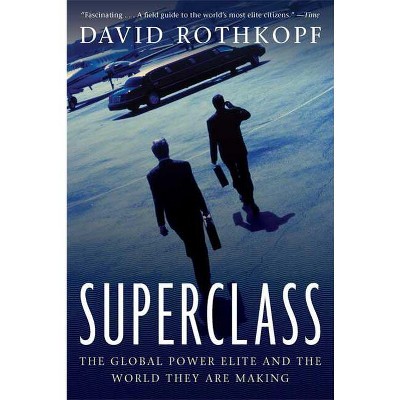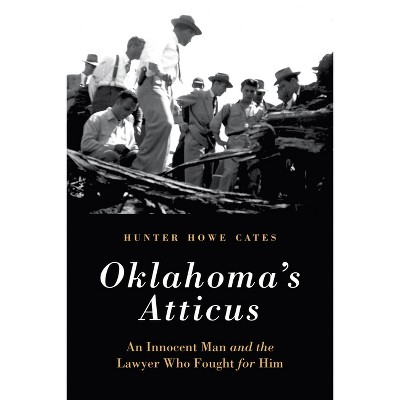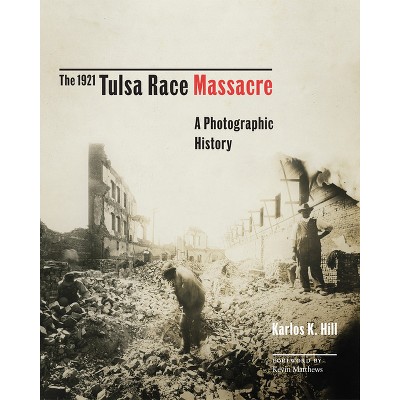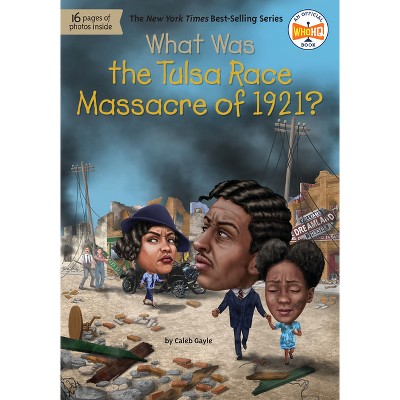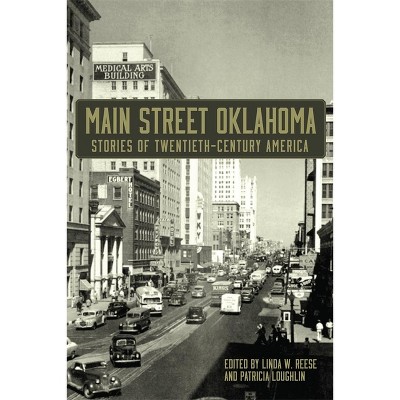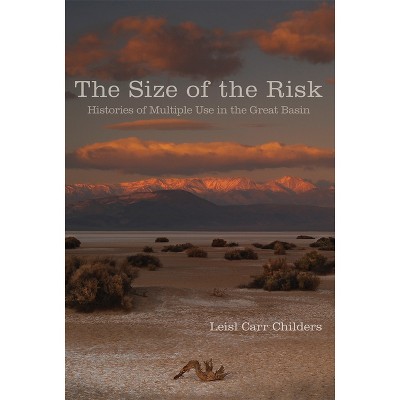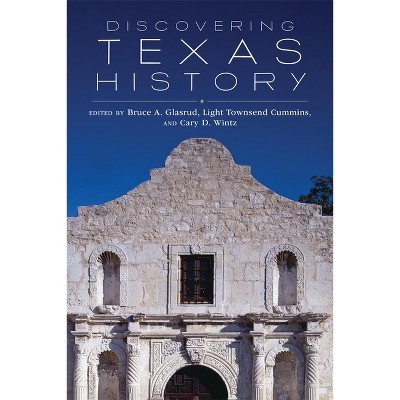Sponsored

Tulsa, 1921 - by Randy Krehbiel (Hardcover)
$19.39Save $15.56 (45% off)
In Stock
Eligible for registries and wish lists
Sponsored
About this item
Highlights
- In 1921 Tulsa's Greenwood District, known then as the nation's "Black Wall Street," was one of the most prosperous African American communities in the United States.
- Author(s): Randy Krehbiel
- 328 Pages
- History, United States
Description
About the Book
"Examines the events and players contributing to, participating in, and responding to Tulsa's 1921 race riot and massacre and the social, political and historical context in which it occurred"--Book Synopsis
In 1921 Tulsa's Greenwood District, known then as the nation's "Black Wall Street," was one of the most prosperous African American communities in the United States. But on May 31 of that year, a white mob, inflamed by rumors that a young Black man had attempted to rape a white teenage girl, invaded Greenwood. By the end of the following day, thousands of homes and businesses lay in ashes, and perhaps as many as three hundred people were dead. Tulsa, 1921 shines new light into the shadows that have long been cast over this extraordinary instance of racial violence. With the clarity and descriptive power of a veteran journalist, author Randy Krehbiel digs deep into the events and their aftermath and investigates decades-old questions about the local culture at the root of what one writer has called a white-led pogrom. Krehbiel analyzes local newspaper accounts in an unprecedented effort to gain insight into the minds of contemporary Tulsans. In the process he considers how the Tulsa World, the Tulsa Tribune, and other publications contributed to the circumstances that led to the disaster and helped solidify enduring white justifications for it. Some historians have dismissed local newspapers as too biased to be of value for an honest account, but by contextualizing their reports, Krehbiel renders Tulsa's papers an invaluable resource, highlighting the influence of news media on our actions in the present and our memories of the past. The Tulsa Massacre was a result of racial animosity and mistrust within a culture of political and economic corruption. In its wake, Black Tulsans were denied redress and even the right to rebuild on their own property, yet they ultimately prevailed and even prospered despite systemic racism and the rise during the 1920s of the second Ku Klux Klan. As Krehbiel considers the context and consequences of the violence and devastation, he asks, Has the city--indeed, the nation--exorcised the prejudices that led to this tragedy?
Review Quotes
"By re-examining one of the most traumatic events in American history, Krehbiel's Tulsa, 1921 encourages readers to end the "conspiracy of silence" that enshrouds discussions of this national tragedy (p. 208). In doing so, readers learn that even after the dust settled, the smoke cleared, and residents cleared out, the memory of the Tulsa massacre remains with Americans in myriad ways today."--New Mexico Historical Review
"[Tulsa, 1921] would be an appropriate and meaningful addition to any syllabus rooted in American history, twentieth-century race relations, media studies, or the dynamics of power, domination, and resistance. Both scholars and "history buffs" will benefit from Tulsa, 1921, as will anyone interested in the cultural and economic history of the southern Great Plains."-- Great Plains Quarterly
"Randy Krehbiel's book is a much-needed contribution to Oklahoma history and African American history. Tulsa 1921: Reporting a Massacre allows for the opportunity to continue the dialogue about racialized violence in the United States and Oklahoma, both historically and today. The book is also an important contribution for understanding the role of the press in racialized violence during the early twentieth century."-- Chronicles of Oklahoma
"In Tulsa, 1921: Reporting a Massacre, Randy Krehbiel offers those interested in US and African American history a thoughtful and essential case study that links the tragedy of the past to contemporary struggles against racism today."--Missouri Historical Review
"Journalist Randy Krehbiel has written the best book on the Tulsa tragedy of 1921 to come out in the past twenty years, or possibly ever."--Alfred L. Brophy, author of Reconstructing the Dreamland: The Tulsa Riot of 1921--Race, Reparations, and Reconciliation
Dimensions (Overall): 9.0 Inches (H) x 6.3 Inches (W) x 1.2 Inches (D)
Weight: 1.37 Pounds
Suggested Age: 22 Years and Up
Number of Pages: 328
Genre: History
Sub-Genre: United States
Publisher: University of Oklahoma Press
Format: Hardcover
Author: Randy Krehbiel
Language: English
Street Date: September 19, 2019
TCIN: 84600829
UPC: 9780806163314
Item Number (DPCI): 247-04-5022
Origin: Made in the USA or Imported
If the item details aren’t accurate or complete, we want to know about it.
Shipping details
Estimated ship dimensions: 1.2 inches length x 6.3 inches width x 9 inches height
Estimated ship weight: 1.37 pounds
We regret that this item cannot be shipped to PO Boxes.
This item cannot be shipped to the following locations: American Samoa (see also separate entry under AS), Guam (see also separate entry under GU), Northern Mariana Islands, Puerto Rico (see also separate entry under PR), United States Minor Outlying Islands, Virgin Islands, U.S., APO/FPO
Return details
This item can be returned to any Target store or Target.com.
This item must be returned within 90 days of the date it was purchased in store, shipped, delivered by a Shipt shopper, or made ready for pickup.
See the return policy for complete information.
Trending Non-Fiction

$19.31
was $20.98 New lower price
4 out of 5 stars with 65 ratings

$18.28
was $19.58 New lower price
4.7 out of 5 stars with 17 ratings

$4.59
MSRP $7.99
Buy 2, get 1 free select books
4.8 out of 5 stars with 123 ratings

$6.20
MSRP $10.95
Buy 2, get 1 free select books
4.8 out of 5 stars with 33 ratings

$7.09
MSRP $9.99
Buy 2, get 1 free select books
4.9 out of 5 stars with 46 ratings


